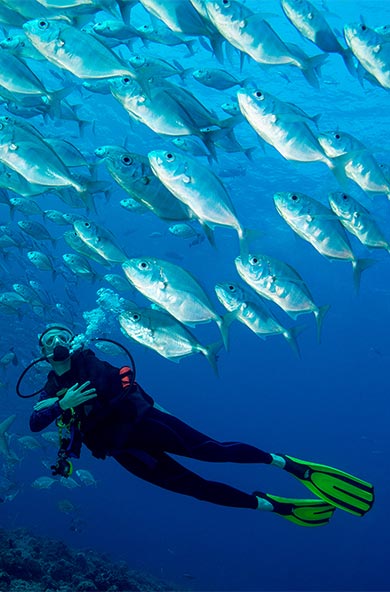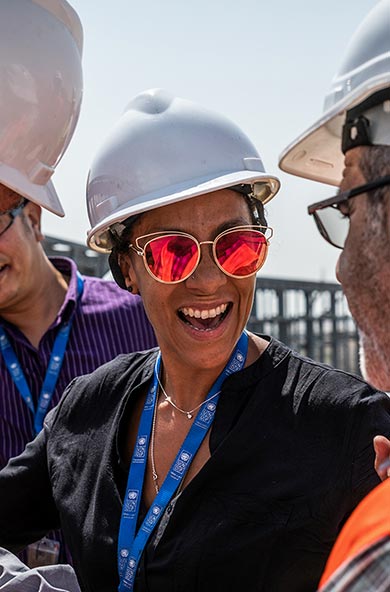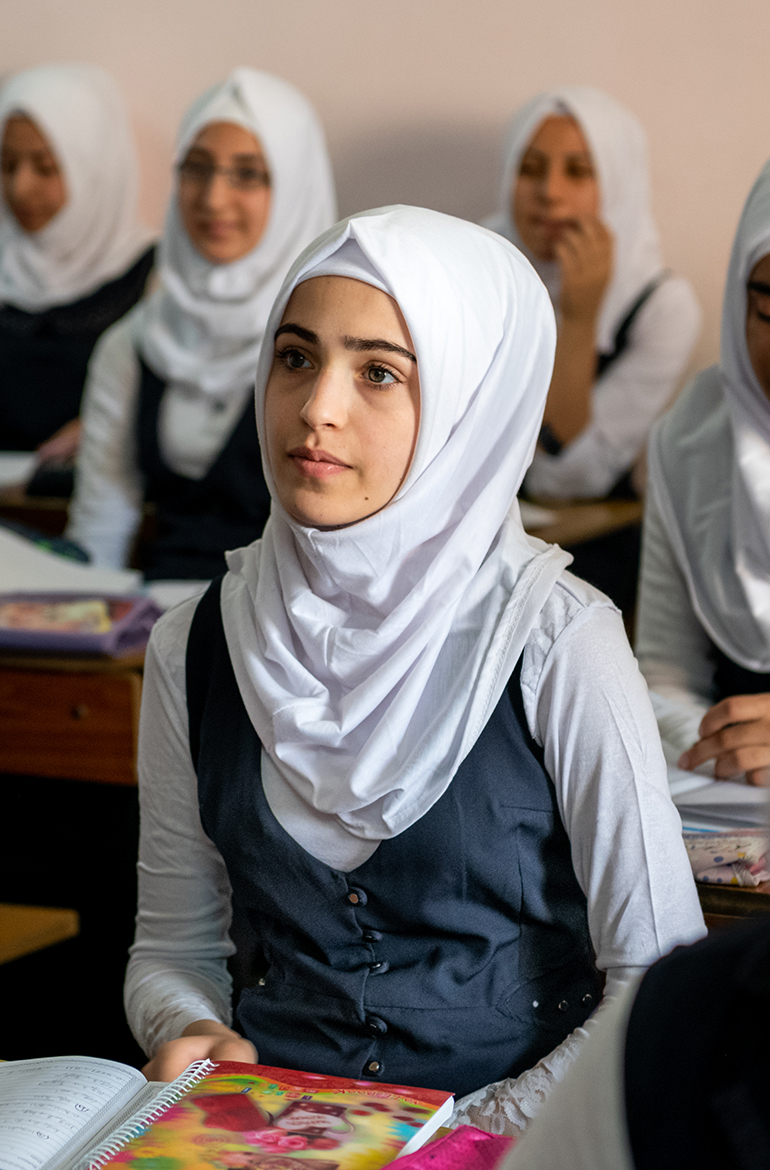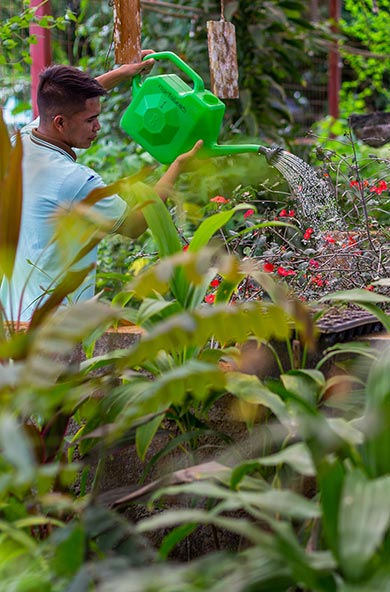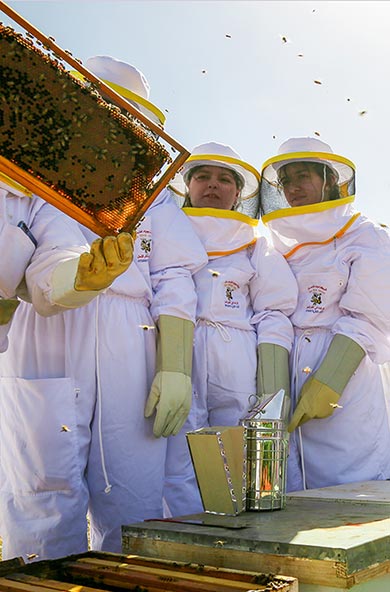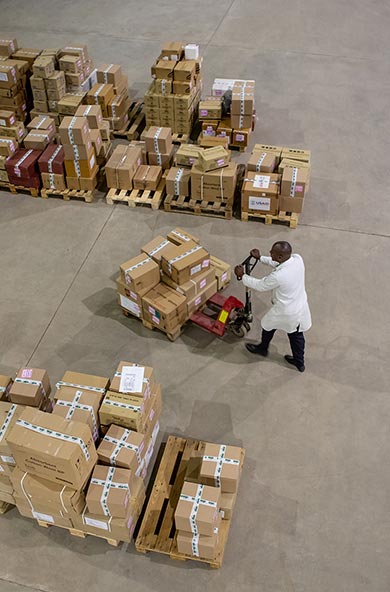Written by Azza Rajhi, Head of experimentation at AccLab Tunisia and Hayfa Sdiri, Youth and Innovation analyst at UNDP Tunisia.
This blog is the result of exploratory research, inspired by UNDP's Tunisia's initiative UTOPIA4CHANGE, in alignment with the efforts of UNDP to rethink its ways of working in a more holistic, systemic and impactful manner
Speculative design is one of the approaches gaining momentum in the fields of system and critical thinking.
In this blog, we’re exploring its role and that of fiction in imagining our futures and how that translates to strategic action within the development field.
Our case study is that of UNDP Tunisia and its use of this emerging approach to feed into the elaboration of the country program document 2021-2025.
We suggest a guided process for development practitioners to better-orient their strategic decisions towards building desirable societies, as imagined by the people.
We also recommend potential prospects for using speculative design in sparking debate and initiating dialogue.
The fictions submitted by youth were translated to comic books
What is speculative design?
The affinity between design and utopia as a form of speculation is not a recent phenomenon. In fact, it is as old as the discipline itself. Since its early days in the modern era, design has had a utopic agenda. That of emancipation and liberation of the human kind.
Design is hence fundamentally optimistic, constantly fed from dreams and utopias and has strong ties with the future. Andrea Branzi (1991) states that "the role of design is rather to incite new questions (...) to create a balance between the people and their artificial environment".
It is from this new wave of questioning, and critical thinking, that new movements of design have emerged. Speculative design also known as "critical design" or " design fiction" is one of them.
Dunne A. & Raby F. think that design could be considered as a means of speculating how things could be. “This form of design thrives on imagination and aims to open up new perspectives on what are sometimes called wicked problems, to create spaces for discussion and debate about alternative ways of being, and to inspire and encourage people’s imaginations to flow freely”.
By playing with futures, speculative design deals with uncertainty and ambiguity, which makes it very compatible with systems thinking by tackling complex social problems in society.
In the next paragraphs, we’ll analyze the comparative advantage of speculative design in tackling social systems within established organizations such as the UNDP.
The Protocole: Crowdsourcing futures for present action
A screenshot from the digital artefact designed to crowdsource stories
The story:
In August 2020, the initiative Utopias4change was designed to spark debate, inspire and inform UNDP projects on the possible futures of development through the eyes of young Tunisians.
The idea emerged from an interesting internal conversation.
We, two colleagues from the innovation task force in Tunisia, were informally discussing alternative futures imagined by creators in cinema, literature, science, ethics, politics, and art. Interactive TV shows such black Mirror were gaining momentum and the idea of relinquishing the power of creative decision-making seemed intriguing.
Shortly after, we received a request from the senior management to work with youth in order to inform the drafting of the Country programme document 2021-2025 in a participatory fashion.
That was our cue to test the compatibility of speculative design and the institutional framework of the UNDP.
We wanted to craft a methodology that borrows, adopts and embraces tools from literature, video games, art and cinema.
The aim was to let youth choose scenarios inspired by challenges faced in the daily work of UNDP in Tunisia and create their own speculative artifacts, their own versions of the future.
We assumed that by testing and integrating the speculative design approach, development professionals will be more at ease with creating new systems and prototypes that push the boundaries of the future.
The tool:
To do so, the team designed a digital artefact through which young people can submit their fictions about utopian or dystopian futures for “Planet T”. A planet with similar socio-economic and environmental conditions to Tunisia.
The artefact* is called “Utopia4change”. It is a game made of different levels that represent the main clusters of UNDP Tunisia and the challenges faced in each. We have chosen an accessible language, metaphors, visual allegories, and terminologies adopted from video games to make it desirable to our young audience.
The game is composed of four distinct levels:
● Big Brother referring to the UNDP’s Governance cluster and the challenges related to it
● Amazonia for the Environment cluster and the environmental challenges
● 1929 referring to the Inclusive Growth and human development cluster
● Level God represents the ambition of the UNDP to drive transformational actions through systems thinking. This refers to the wicked problems we face in the 21 century.
Visual allegory that represents the Governance cluster
Youth were encouraged to develop utopias in order to bring about change at one of the 4 levels. They had the choice to submit fiction in different forms: sketches, poems, writings, slam, drawings, 3D models or/and theater pieces.
The call for application was primarily disseminated through social media.
The UNDP team later went through a sense-making process in order to extract emergent patterns and insights by coding and categorizing activities. The results of the sense making process have been shared with Country Office colleagues in order to reflect collectively on how this can inspire and inform their projects.
Data sensemaking
Ten submissions were received; following a sense-making process, the following ideas, patterns and models emerged:
● A fear of excessive and unethical technological progress.
● A fear of the lack of privacy, confidentiality, exploitation of personal data and the rise of artificial intelligence.
● Poor governance and management of water resources as well as food insecurity.
● Human- caused violence such as crimes, wars, terrorism, cyber-terrorism.. Through Utopia4 change, the need to consider the “cyber” dimension in designing interventions became clearer than ever.
● An expressed need for ethical leadership characterized by young, brave and female characters
● The emergence of alternative governance systems with young stakeholders
● The importance of rethinking the education system based on the 21 century skills and collaboration for sustainable societal change.
● Advocacy for sustainable and responsible prosperity rather than economic growth.
● The urge for a cultural change to reevaluate humans' relationship to nature in the anthropocene.
Programmatic integration through dialogue
The aim of the exercise is to inspire the Country programme document, the programmes and projects of the Tunisia Country office. It was not about predicting the future, nor about solving problems. It was simply an attempt to provoke and create a space for dialogue.
These fictions are as concerned with the future as they are with the present, and this is where they become “critique”* (Dunne & Raby). For us, futures are not a destination to be reached. They are a part of the spectrum of possibilities. This contributes to building links between today’s world and the imagined one.
Our goal, therefore, is to inspire, and to offer a kind of a direction, a north-star conducting us from where we stand today to where we thrive to stand according to the scenario.
We have to acknowledge here that our intention is to inspire and not to problem-solve, to suggest and not to validate.
It is more about provoking and creating a space for dialogue. We are referring here to the third dimension of dialogue as defined by Banathy: dialogue as creating shared meaning: by dialoguing with colleagues, there is a flow of meaning circulating within us, giving birth to a shared, emergent meaning that has been created by them and must be continually recreated.
By listening deeply to youth fictions, and by sharing experiences with each other, they don’t take away the transformational power of words. (Banathy). Through this meaning-making capacity, which is an essential aspect of dialogue, we are creating the universe (Weber, 1990). So these “outputs-artefacts” are used here as a mediation tool between all the participants.
Process modelization
Process modelization, @UNDP-TN
The utopia4change model is composed of 4 iterative and non-linear steps:
- Crowdsourcing futures: What we intend by this is the process of collecting different scenarios from a multiplicity of stakeholders. Setting the intent and framing the exercise for the participants is mandatory at this stage. In our case, we designed the game, the website, the levels and the avatars to help us direct the players without necessarily interacting with them or inflicting our biases and mental models on their thinking processes.
- Data sense-making: Once the data was collected, in its different formats, a multi-disciplinary team of volunteers was set in place to sense emerging trends, detect patterns, code and classify the outcomes.
- Visualization: The emergent insights from the sense-making were later visualized into new models, systems, flows and processes that are relevant to UNDP’s works and can inspire its strategic direction.
- Learnings integration through dialogue: The learnings were shared using visual communication with UNDP teams in order to spark dialogue and initiate a process of collective meaning-making.
Takeaways:
By the end of the exercise, we realized the value of:
● Acknowledging our mental models and biases at different levels in the process but most importantly while doing the sensemaking and igniting the dialogue;
● Keeping the exercise continuous throughout the year;
● Imagining but also extrapolating the futures: collecting futures without an intent might be a very creative but chaotic process. In our case, the intent and the frames were the most important. We needed the scenarios to be built around informed data points that are arising from emerging signals.
● Diversifying the team in charge of the sensemaking exercise to ensure the variety of interpretations
Tomorrow has already started yesterday!
This exercise is a solid proof of the need and the benefits of adopting a long-termism mindset when doing development and innovation.
This experience has been very useful in feeding and inspiring our Country programme document that’s focusing on reestablishing trust, however we aspire to keep this process going and diversify its applications.
Its reliance on external crowdsourcing, continuous insights emergence, conversational and mediation capacities and visualization assets make this process worth scaling in other realities and contexts.
*"we adopt Herbert Simon functionalist definition of artifact which is the result of a process and arrangements. It is an entity produced by a human (as opposed to the natural world) and that is designed to respond to a need. It can be abstract or concrete, physical or symbolic, tangible or intangible.
Write us and share with us your insights!
This is the link for Utopia4Change comic book,

 Locations
Locations